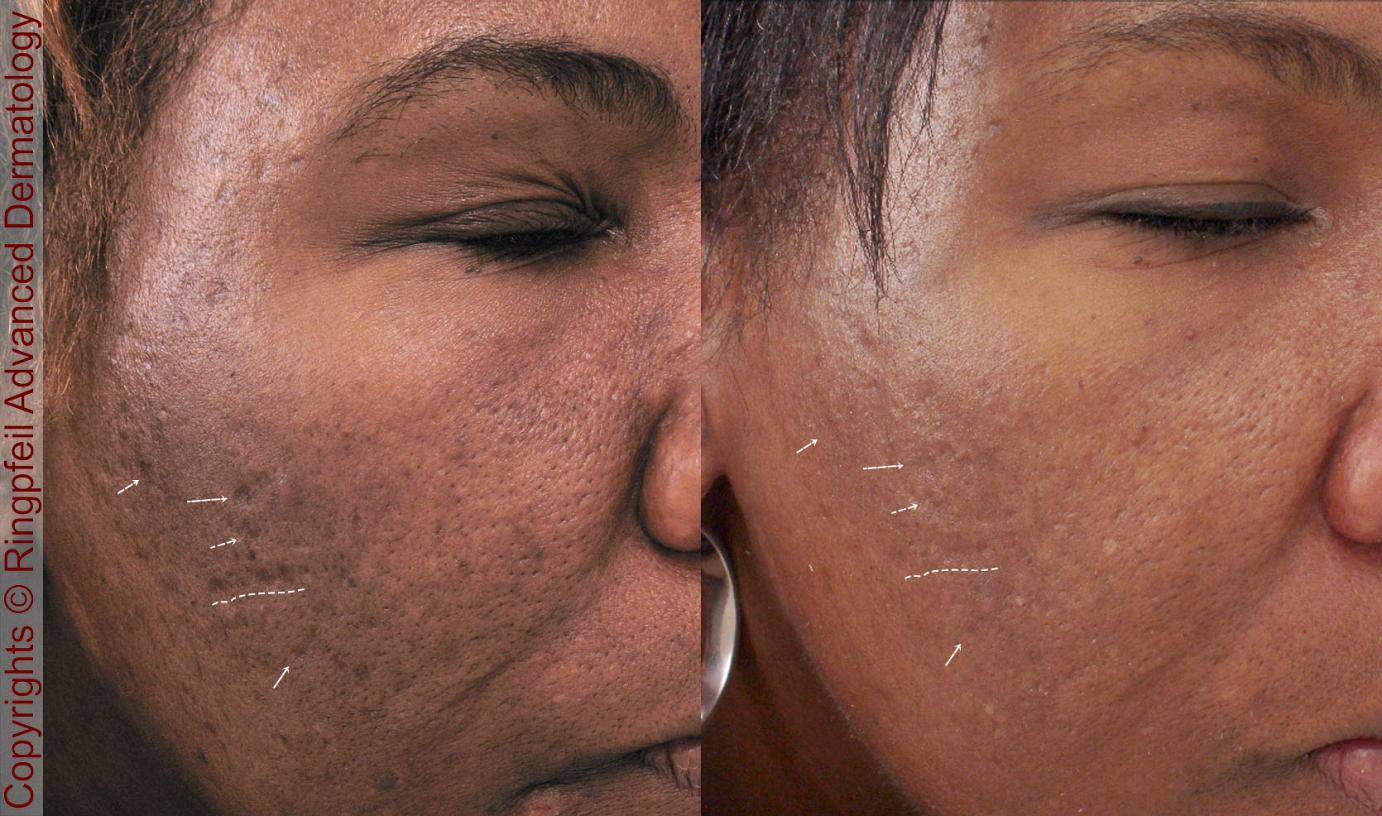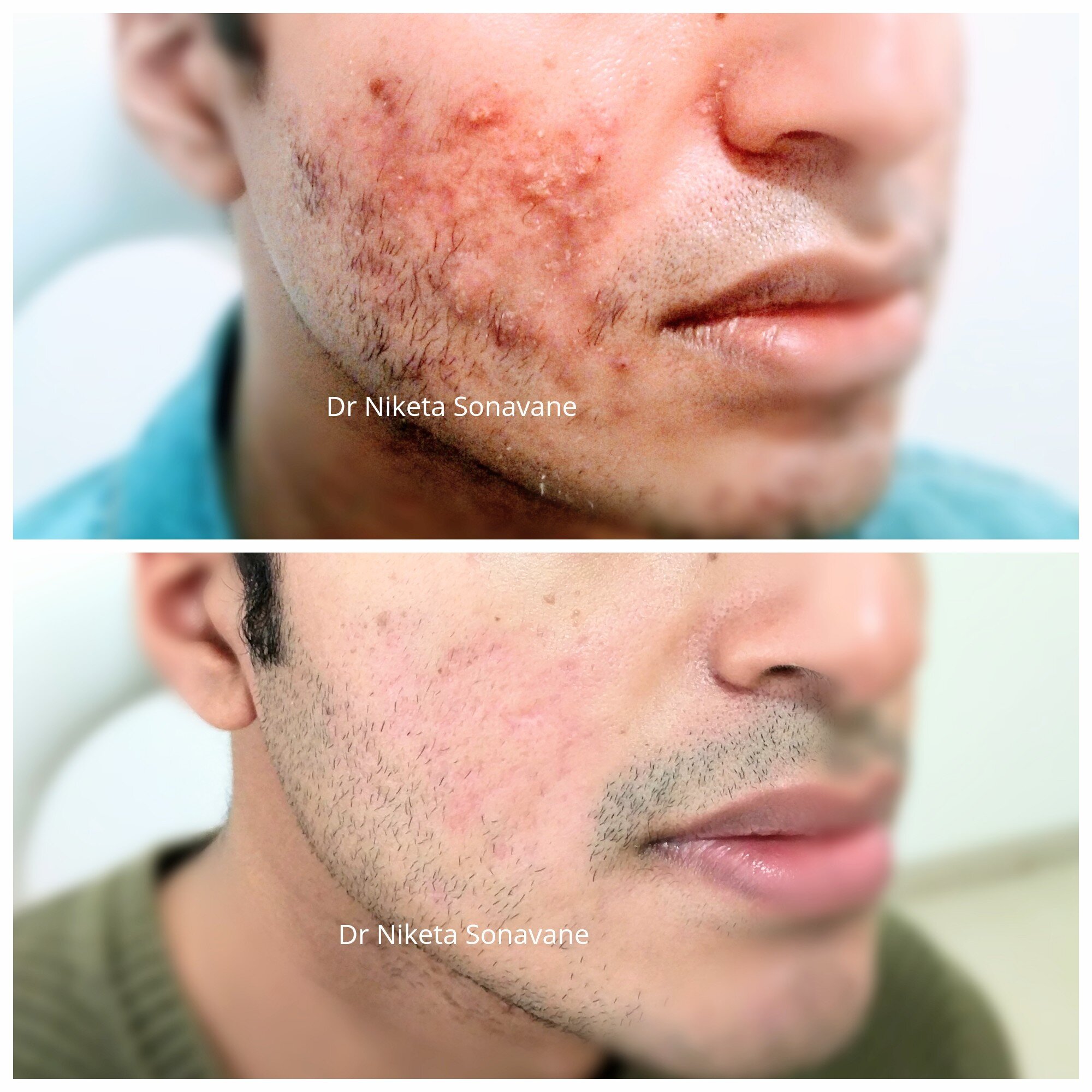Targeted Acne and Acne Scars Treatment: Redeem Your Clear Skin
Targeted Acne and Acne Scars Treatment: Redeem Your Clear Skin
Blog Article
Comprehending the Different Skin Problem and Reliable Therapy Options for Acne Scars
Acne marks represent a complicated interaction of skin conditions that substantially impact people' self-confidence and general skin health and wellness. Understanding the distinctive sorts of acne scars-- atrophic and hypertrophic-- together with their underlying reasons, is pivotal for determining reliable therapy strategies. Different therapeutic choices exist, ranging from sophisticated skin-related treatments to natural solutions. The efficacy of these treatments usually pivots on tailored analyses by certified professionals. As we explore the landscape of acne mark administration, it comes to be obvious that the journey towards more clear skin might entail greater than just topical solutions.
Kinds Of Acne Marks
The 2 main groups of acne scars are hypertrophic and atrophic scars. These scars are further identified right into three subtypes: ice choice marks, which are deep and narrow; boxcar scars, which are larger and have well-defined sides; and rolling scars, which create a wave-like look due to unequal skin texture.
In comparison, hypertrophic scars result from an overproduction of collagen during the recovery process, causing increased areas on the skin. These marks are usually solid and can vary in color, in some cases showing up red or darker than the surrounding skin.

Sources Of Acne Scarring
Scarring occurs as an outcome of the body's natural healing action to swelling and injury created by acne lesions. When acne forms, it triggers an inflammatory feedback, resulting in the launch of numerous cytokines and growth aspects that advertise healing. However, this procedure can in some cases bring about extreme cells formation or poor repair service, resulting in scars.
The primary sources of acne scarring consist of the intensity of the acne itself, period of the lesions, and individual skin types. Severe inflammatory acne, such as blemishes and cysts, is more probable to cause scarring due to much deeper tissue damages. Additionally, improper handling of acne lesions, such as squeezing or choosing, can aggravate cells injury and inflammation, increasing the probability of scarring.
Hereditary predisposition likewise plays a considerable duty; people with a household history of scarring go to a greater threat. Additionally, skin kind and color can influence mark development, as darker skin tones may experience post-inflammatory hyperpigmentation, while lighter skin might create atrophic marks.

Treatment Options for Scarring
Effective treatment options for acne scarring vary depending upon the kind and extent of the marks. Normally categorized into atrophic, hypertrophic, and keloid marks, these conditions need tailored approaches for optimum outcomes.
For atrophic scars, which are defined by a loss of cells, therapies such as chemical peels, microdermabrasion, and laser therapy are generally utilized. These techniques promote skin revival and boost collagen production, thereby boosting skin appearance. Subcision, a minimally invasive treatment, can also be efficient by damaging up coarse bands beneath the skin.
Hypertrophic and keloid marks can be more challenging to treat. Options include corticosteroid injections to minimize swelling and flatten the scars. acne scars treatment. In some instances, cryotherapy or laser treatment might be suggested to decrease their look
Surgical options are readily available for serious scarring, where excision or skin grafting might be needed. It's vital for individuals to speak with a skin specialist to assess their details scar kind and go over the most ideal treatment plan. Incorporating several treatments often produces the very best outcomes, making certain that each person's one-of-a-kind skin disease is addressed efficiently.
Natural Home Remedy and Natural Solutions
Natural solutions and home remedies can supply an available technique for people seeking to boost the look of acne marks. Numerous components located in the home kitchen have shown prospective advantages in boosting skin appearance and promoting healing.
One prominent solution is aloe vera, known for its soothing and anti-inflammatory homes. Using fresh aloe vera gel straight onto the scars can aid enhance skin hydration and minimize soreness. In a similar way, honey has natural anti-bacterial and moisturizing qualities that can aid in scar recovery. It can be made use of as a mask, left on for thirty minutes prior to rinsing.
Another efficient alternative is lemon juice, which works as an all-natural exfoliant and can lighten hyperpigmentation. However, it must be utilized very carefully, as it might trigger photosensitivity. Oatmeal masks are also valuable; their gentle peeling can help eliminate dead skin cells while relaxing irritation.
Important oils, such as tea tree oil and lavender oil, can better support mark healing because of their antimicrobial residential properties. It is essential to carry out a patch test before applying any type of treatment to guarantee there are no damaging reactions. These Recommended Reading natural solutions can be a corresponding method in the trip to reduce acne scars.
Protecting Against Future Scarring
Adopting a positive approach to skin care can significantly decrease the danger of developing future acne scars. Among the crucial methods is to manage acne effectively as it emerges Our site (acne treatment for sensitive skin). This includes making use of non-comedogenic skincare items and medicines recommended by dermatologists that target acne without irritating the skin. Normal cleansing, peeling, and hydration can assist maintain skin health and protect against blocked pores.
Furthermore, avoiding the temptation to pick or press acne sores is essential, as this can lead to inflammation and subsequent scarring. Instead, individuals need to concentrate on applying topical therapies that advertise healing and lower inflammation. Active ingredients such as salicylic acid, benzoyl peroxide, and retinoids are recognized for their efficacy in taking care of acne and minimizing marks.

Last but not least, maintaining a healthy and balanced diet regimen abundant in antioxidants and remaining moisturized supports skin regeneration. By carrying out these safety nets, people can substantially decrease their risk of future scarring and promote total skin health and wellness.
Conclusion
To conclude, an extensive understanding of acne scars, including both atrophic and hypertrophic kinds, is important for reliable therapy strategies. Tailored interventions, consisting of expert therapies and home treatments, can substantially improve skin look and structure. Safety nets likewise play a crucial duty in reducing future scarring. Consultation with a skin specialist remains imperative to develop personalized strategies that take into consideration private skin types and mark seriousness, inevitably enhancing the efficacy of mark monitoring methods.
Acne marks stand for an intricate interaction of skin problems that dramatically effect individuals' self-confidence and general skin health. The two primary categories of acne scars are atrophic and hypertrophic scars. These scars are further classified into three subtypes: ice pick marks, which are narrow and deep; boxcar scars, which are wider and have well-defined edges; and rolling scars, which create a wave-like appearance due to unequal skin appearance.
An extensive appointment with news a skin doctor can help identify the most suitable treatment, taking right into account the person's skin kind, scar intensity, and overall skin wellness.
Assessment with a skin doctor stays essential to devise customized methods that take into consideration individual skin types and scar severity, inevitably improving the effectiveness of mark administration strategies.
Report this page